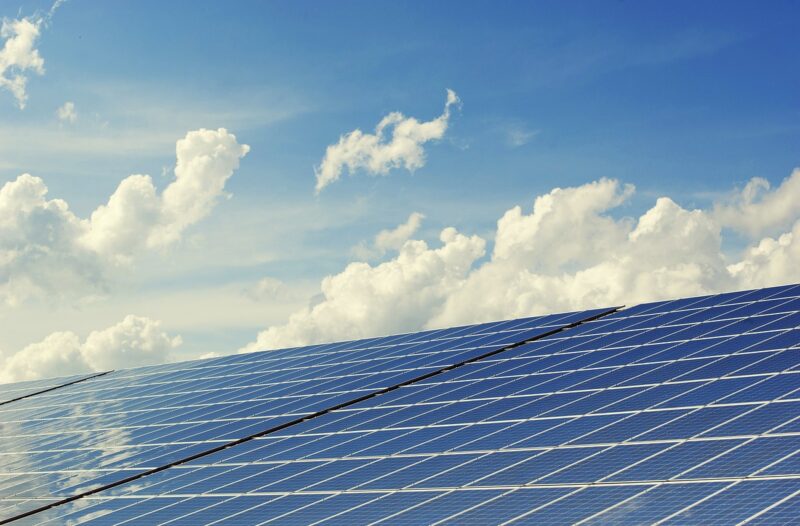The Growing Demand for Silver in Sustainable Energy: Why This Metal Is in High Demand
November 14, 2024

Silver is not just a precious metal; it is a powerful player in the renewable energy sector. Over the past few years, the world has witnessed a transformative shift towards sustainability and renewable energy, with silver emerging as a crucial resource. Its unique properties make it indispensable in various technologies crucial for a sustainable future.
1. Understanding Silver’s Role in Renewable Energy
Silver’s applications span a range of renewable technologies, from solar energy to electric vehicles (EVs). Below are some of the primary areas where silver is playing an increasingly significant role:
– Photovoltaic Cells: Silver is a key component in the production of solar panels. With exceptional conductivity, silver is used in photovoltaic cells to transfer electrical energy generated from sunlight. A solar panel can contain approximately 20 grams of silver, and as the demand for solar energy grows, so does the demand for silver.
– Electric Vehicles (EVs): The push for reducing carbon emissions has led to a boom in electric vehicle production. Silver is utilized in various EV components, contributing to better efficiency and performance. It is essential in battery technology, charging systems, and electrical connections within the vehicle.
– Energy Storage Solutions: Silver nanowires are now being explored for use in energy storage systems, particularly in durable batteries that require efficient conductivity. As the storage of renewable energy becomes more critical, this application for silver is likely to expand further.
– Hydrogen Production: Silver catalysts are employed in producing hydrogen through electrolysis, a process crucial for generating clean energy. As more countries invest in hydrogen as a sustainable energy source, silver demand in this area will increase.
2. Market Dynamics Driving Silver Demand
Several trends and market dynamics are currently propelling the growth in silver demand, particularly within the renewable energy sector:
– Increasing Solar Installations: According to the International Energy Agency, solar power capacity has been growing steadily at an exponential rate. In 2021 alone, global solar capacity increased by more than 150 gigawatts. This surge translates directly to higher silver consumption as producers require more of this metal for solar cells.
– Electric Vehicle Market Growth: Sales of electric vehicles are estimated to reach 30 million worldwide by 2030. As the EV sector expands, manufacturers will continue to rely heavily on silver for improved efficiency and durability.
– Government Initiatives and Investments: Governments across the globe are launching initiatives to promote renewable energy, often providing subsidies and incentives for solar and wind energy projects. These initiatives directly boost the demand for silver, as manufacturers ramp up production to meet these market needs.
– Technological Innovations: New advancements in technology are enhancing the efficiency of silver usage in renewable applications. Innovative solar technologies, such as bifacial solar cells, utilize even more silver than traditional panels, further increasing the demand for this precious metal.
3. Silver’s Unique Properties Contributing to Its Demand
Silver’s unique physical and chemical properties make it an ideal candidate for various applications:
– High Conductivity: Among all metals, silver exhibits the highest electrical conductivity. This property is crucial for technologies that require efficient energy transfer, making it an unparalleled material choice for solar panels and EVs.
– Antimicrobial Properties: Silver possesses natural antimicrobial properties, making it a valuable element in certain energy applications where hygiene is essential, including in EV battery production processes.
– Reflectivity: Silver’s reflective nature is significant in concentrating solar power systems, where sunlight is focused, and its efficiency is maximized. This reflects silver’s integral role in optimizing renewable energy technologies.
4. The Future of Silver in Sustainable Energy
As the transition towards a more sustainable energy landscape accelerates, silver’s demand is projected to continue its upward trajectory:
– Projected Market Growth: Industry experts forecast that the global solar market will continue to grow, leading to further increases in silver demand. Some estimates predict an additional 1.2 billion ounces of silver could be required by 2030 alone to fulfill solar industry needs.
– Investment Opportunities: With the rising applications of silver in renewable energy and technology, investors see opportunities for potential returns, which might influence the market positively.
– Circular Economy Potential: Silver also has the potential to play a vital role in the circular economy. Recycling old products to extract silver can provide a sustainable supply to meet future demands, minimizing ecological footprints.
5. Challenges Facing Silver Supply and Sustainability
While the future of silver looks promising within the renewable energy sector, certain challenges must be addressed:
– Mining and Environmental Impact: The extraction of silver has environmental implications, including habitat destruction and pollution. Sustainable mining practices are vital to ensuring that silver can continue to be sourced responsibly without causing long-term ecological harm.
– Market Fluctuations: The price of silver can be sporadic due to factors such as market speculation, geopolitical tensions, and shifts in demand, affecting its availability and production incentives.
– Technological Challenges: As technology evolves, manufacturers must also invest in finding substitutes or alternatives that can compete with silver’s performance, especially in price-sensitive applications.
Conclusion
Silver’s role in the sustainable energy sector is expanding rapidly, driven by its essential applications in solar energy, electric vehicle technologies, and energy storage solutions. As the world transitions towards a cleaner energy future, silver stands out as a critical component in achieving those goals. To ensure its sustainable use, industries must balance the demand for silver with responsible sourcing, advancing mining practices, and exploring recycling options.
Investors, policymakers, and technology leaders must continue to collaborate to fully understand the potential impacts of silver utilization and explore its opportunities in shaping a sustainable energy future.
With the right strategies, practices, and innovations in place, silver is set to maintain its high demand in the years to come, proving itself to be more than just a precious metal, but a vital asset in the sustainability movement.







